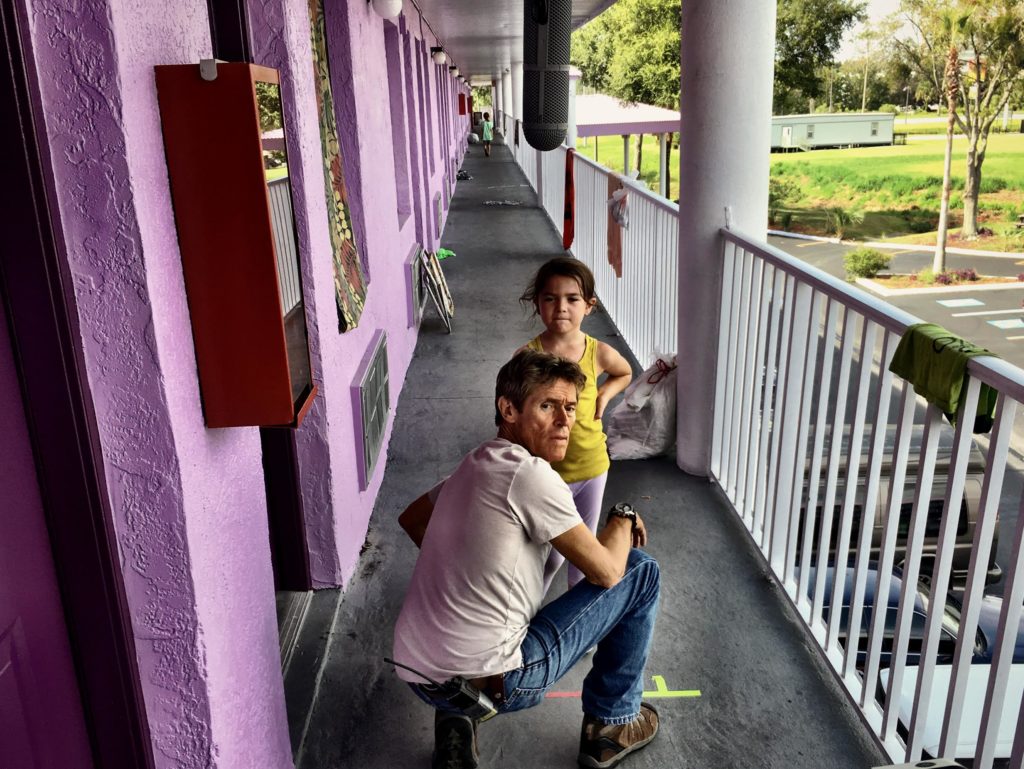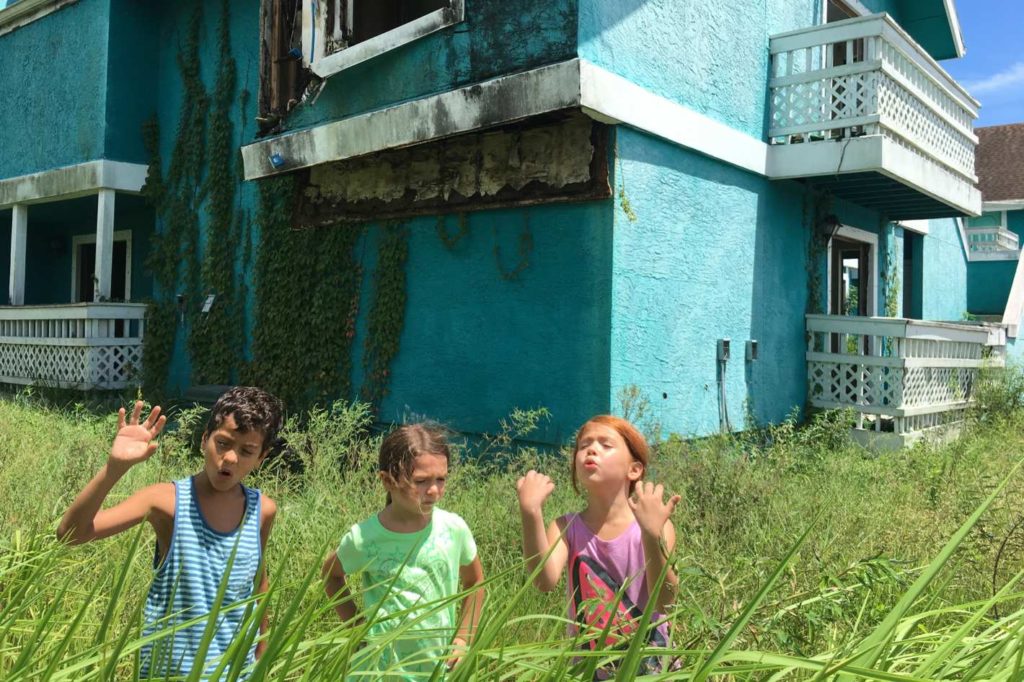Pop Theology guest contributor Kelvin Martinez reviews the latest indie gem from A24, The Florida Project and what it says about worlds of scarcity and worlds of abundance. Read it after the jump.
“How beautiful can life be? We hardly dare imagine it.”
― Charles Eisenstein, Sacred Economics
As I watched The Florida Project I squirmed in my seat, rewriting the script in my head and wishing director Sean Baker and co-writer Chris Bergoch had written the characters as the ‘ideal victims’ I desperately hoped they would be. I was invited to the screening because I work in homeless services. I wanted to see propaganda for my cause. I wanted decisively relatable characters without the jaded faults that are often imprinted by a life of hardship. Instead, as can be expected of Baker’s filmmaking, The Florida Project was an honest and complicated glimpse of life on the margins of society. In this delicate and uniquely charming portrayal of a family navigating poverty, Baker surveys what life can look like when ends precariously meet.

The Florida Project tells the story of Moonee, a resourceful 6 year old untamed by expectation or obligation. She wrings adventure out of every moment of her summer vacation on the streets around the cheap motel where she and her mother Halley reside among other struggling families. Halley loves her daughter, but she is exceedingly inattentive. Set just outside of Disney World, the scenery is littered with kitschy establishments shaped like the fare they sell, an orange shaped orange shop, an ice cream cone shaped ice cream stand. Moonee’s home is no different, a castle-shaped budget motel. She is the ruler of her kingdom, the creator of her own universe. She rampages through the nearby motels collecting neighboring children for her daily excursions, causing tolerable and mostly endearing headaches for Bobby, the motel manager. Not unlike her daughter, Halley is a woman of unbridled disposition. She is resourceful, but prone to fights, profanity, and bad decisions. One gets the sense that few people have ever helped nurture her ability to make a good decision.
After the screening, I drove back to The Center in Hollywood, the community center for people experiencing homelessness where I work, tucked between Sunset and Hollywood Boulevard. I drove past towering palm trees, Grauman’s Chinese Theatre, and tourists taking pictures on the Walk of Fame. I was reminded of Moonee and her imagined adventures in the strip malls outside of Disney World. I was reminded that often wealth and poverty live side by side.
Later, I listened to an interview with Baker where a reporter asked him who he considers to be the villain of the film. He thought the interview was trying to get him to suggest the Trump administration, but instead he replied that the villain might be the effects of the 2008 recession and the coinciding housing crisis. I can see where Baker’s answer comes from: he’s addressing the fact that this family’s potential to overcome their circumstances have been severely limited by the reality of the world around them. However, I’m not sure his answer goes far enough. Recessions, financial crises, and poverty are not villains; they are the villainous results of the world that we have created.

The disparity between imagination and reality becomes a major theme in the film, poignantly expressed in the juxtaposition of the two heroines. They are intertwined as mother and daughter, but they inhabit two vastly different worlds. As a 6 year old, Moonee navigates a kingdom of endless potential. People give her the benefit of the doubt, they forgive her, they look out for her, they are kind to her. Her only concern is how to spend her days. Should she convince someone to buy her friends ice cream or explore the ruins of the abandoned motel down the street? Will she launch an assault of spit wads on the neighbor’s car or spelunk in the motel’s electrical closet? Her world expands as far as her creativity allows. She can assume the compassion people reserve for those they understand as innocent.
Halley, on the other hand, is a prisoner to a world of indifference. The audience never learns much about her past, but it is safe to assume her life has taken mostly predictable turns. Every moment of poor judgement only seems like the most recent outcome in a chain of events that probably began when she was Moonee’s age. With one look at Halley, covered in tattoos and sass, an employer can guess that she’s not company material. She embodies a common paradox; shamed for being unemployed while refused the opportunity of being hired. Her circumstances culminate in the person we see on screen–disillusioned, self-destructive, and relying on petty schemes to afford the nightly rent of her motel room. Her problem isn’t the Great Recession, it’s that she lives in a world that isn’t nearly as creative as Moonee’s. Halley rarely meets compassion, because compassion is reserved for those the world understands as innocent. She can’t be blameless, she can’t be the victim, because then we’d have to acknowledge that we might be the violators.
When I think of Halley, I’m reminded of so many of the people I meet at The Center. People who are struggling with incredible trauma. People who are trying harder than most of us will ever need to. People who flourish when they are shown just a little bit of compassion. We have imagined magical kingdoms and towns made of tinsel, but we have yet to imagine a place with enough for all of us. If we imagined a world like Moonee’s–built on creativity, generosity, abundance–then we might not have astounding poverty in the midst of immense wealth. Until we can fathom that kind of world, we are still the villains.
The Florida Project (155 mins.) releases in select cities today and is rated R.
